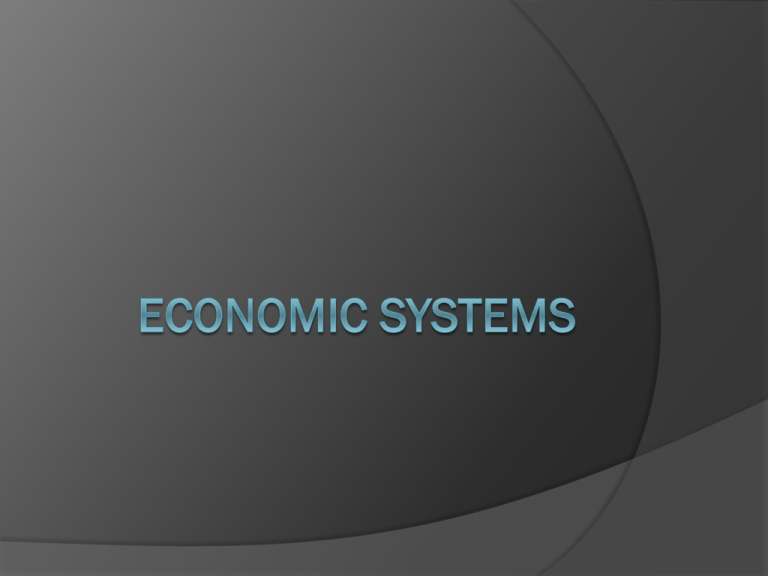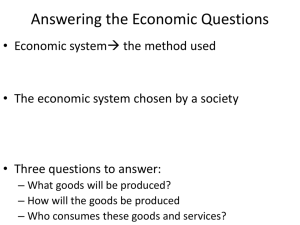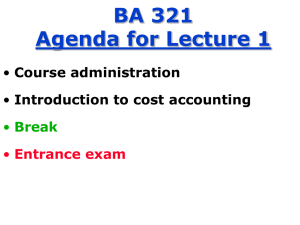
What is Economics?
The study of how to distribute limited
resources
the study of how people choose to use
scarce resources to satisfy their wants.
Economic System
The organization of an economy, which
represents a country’s distinct set of
social custom, political institutions, and
economic practices
Economic System
All societies must deal with the problem
of scarcity. They must make choices
about resource allocation because their
resources are limited and they must
strive to use their resources as efficiently
as possible
There are 3 basic economic questions
that must be answered by all societies
3 Basic Economic Questions That Any
Society Must Answer
What to produce
How to produce
For whom to produce
4 main economic systems
Traditional
Market
Command
Mixed
Market economy (capitalism)
An economic system based on private
ownership
Economic decisions are answered
largely by the market (the buyers and
sellers’ decisions in the marketplace)
Individuals are free to pursue their own
self-interest
The government seldom intervenes
Market Economy
Is consumer-centered and innovative but
creates inequality and instability
Profit acts as the incentive for production
Consumers help sellers decide what to
produce for those who are willing and
able to pay for these products
Resources flow to those industries
producing profitable products
Command Economy (socialism/
communism)
All productive property, natural
resources and capital are in the hands
of the government
Central planners decide on what should
be produced, how production should be
carried out and how the output should
be distributed
Equalizes income but often lacks
freedom.
Traditional Economy
An economic system in which economic
decisions are made on the basis of
custom and tradition
The way outputs are distributed remain
the same from generation to generation
Resources are allocated by inheritance
Focuses on non-economic concerns and
have tight social constraints.
Traditional Economy
The level of technology is low and pace
of life is generally slow
Can be found in places in South
America, Africa and rural places in Asia
Mixed Economy
It is only in theory that a country is purely
a market or a command economy
because each system has serious flaws
Most economies are a mix of market and
command systems
Mixed Economy
An economic system that combines
aspects of a market economy and a
command economy
Production decisions are made both in
private markets and by the government
Range of Economic Systems
Index of Economic Freedom
www.heritage.org/index
Economic Goals
There are seven major economic goals:
economic efficiency
income equity
price stability
full employment
viable balance of payments
economic growth
environmental sustainability
Complementary and Conflicting
Economic Goals
Economic goals may be complementary.
An example is the relationship between full
employment and economic growth.
Economic goals may be conflicting.
An example is the relationship between price
stability and economic growth.
Copyright © 2005 by McGraw-Hill Ryerson Limited.
All rights reserved.
Economic Goals
1.
Economic Efficiency
- getting the highest benefit from an
economy’s scarce resource
Economic Goals
2. Income Equity
- a country’s output is distributed fairly
Economic Goals
3. Price Stability
- maintaining a general level of prices for
goods
Economic Goals
4. Full Employment
- increase employment rate to fully
utilize the country’s human resources
Economic Goals
5. Viable Balance of Payments
- ensure a balance between exports and
imports
Economic Goals
6. Economic Growth
- Economic growth will lead to an
outward shift in the production
possibilities curve, leading to higher
standard of living
Economic Goals
7. Environmental Sustainability
- the quality of the physical environment
should be sustained







